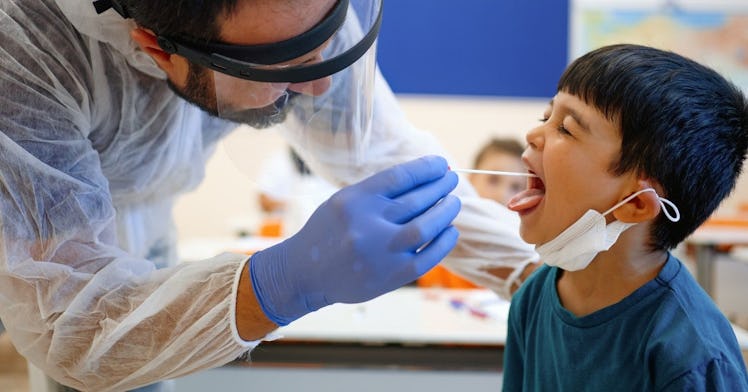Finally – Biden Admin Is Giving Schools The Covid Tests They Need
As COVID cases are on the rise, the government has committed to sending schools 10 million COVID-19 tests per month. But how will it shake out?

On Wednesday, January 11th, the Biden Administration announced that it would be providing 10 million COVID tests to schools across the United States each month, five million of which would be rapid tests, the other five million of which would be PCR tests.
This announcement comes alongside other major testing news from the Biden administration. They recently announced that, starting January 15th, private insurers would begin to cover 8 COVID-19 at-home tests per person per month and that they’d send 500 million COVID-19 tests out to people who need them via a soon-to-launch government website.
Meanwhile, major changes are afoot in America’s schools. as schools attempt to avoid returning to remote learning while COVID cases are rising across the country. Here is everything you need to know about the newest development.
How Are the Tests Being Administered?
Five million of the tests will be million rapid tests that will be sent directly to schools, while the other five million lab-based PCR tests will be available through the Department of Health and Human Services, with samples being sent to labs.
As for the question of when the extra tests will be available, it would appear that these 10 million additional tests are expected to be available immediately — or at least made available as soon as they can be produced and made available to schools.
Why Are Additional Tests Being Provided?
There are a number of reasons the 10 million tests are being sent out, though there’s a solid argument that this should have been the norm sooner. The omicron surge, which has shot positive cases into the stratosphere, is well underway, with the number of confirmed COVID cases reaching a record 1.35 million on Monday.
As students are returning to school after winter break, there are growing concerns about schools remaining open in the wake of this new variant. Teachers and students will undeniably test positive for COVID-19, but the best defense is a good offense. The hope is that with these additional tests, schools will be able to avoid staff shortages and students missing school through “test-and-stay.”
What Is Test-to-Stay?
At least part of the reason that the Biden administration is increasing the number of tests available is an attempt to keep schools open through the new CDC-recommended “test-to-stay” guidelines which were announced in late December. The ‘test-to-stay’ policy says that unvaccinated students who are exposed to COVID-19 can stay in school so long as they test negative — and they will have to be tested twice in the week after they are exposed. This is a major reversal on a previous policy that maintained that unvaccinated students had to quarantine for two weeks after being exposed to COVID-19. But the policy is only as good as there is access to affordable COVID-19 tests for students. The new Biden admin plan could close some of that gap. The test-and-stay approach has not been without criticism, however.
Who Is Administering the Tests?
One question that can get overlooked amidst the chaos of trying to keep schools open during a pandemic through increased testing is simply: who will be administering the tests? Typically, you would assume a school nurse, but the shortage of registered nurses has proven to be a problem with the increased demand due to COVID. Before the pandemic, over half of the schools in the United States did not have a full-time nurse, and while it seems likely that number has increased due to the current circumstances, many schools may still lack a clear system for testing.
For communities with high transmission rates, The Department of Health and Human Services and the Federal Emergency Management Agency are planning to set up surge testing sites and the CDC will be working with the Department of Education to help school districts connect with testing providers.